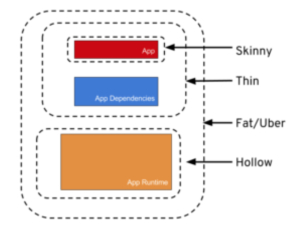Enterprise Java is a highly scalable and reverse platform that is used to develop everything from small business websites to Fortune 500 backend systems. In fact, hundreds of thousands of your favorite websites are already running this ever-evolving platform. And with exciting new advancements locked into its roadmap, Enterprise Java has a bright future.
In this article, I will give you a high level overview of Java Enterprise ecosystem , and you will learn much, much more. We’ve got a lot to cover, so let’s get started.
History of JavaEE
Definition : Java EE consists of a set of over 28 specifications and a runtime environment. This means that all Java SE APIs can be used in combination with any Java EE component.
This set of APIs can be used to build standard component-based multi-tier applications and can be deployed in different containers offering a variety of services. The Java EE programming model relies on annotations to specify configurations, rather than XML description files, and uses convention over configuration to help you get up and running with as little ceremony as possible. It has its own contextually-aware dependency injection framework at the heart of its programming model.
The platform was known as Java 2 Platform, Enterprise Edition or J2EE from version 1.2, until the name was changed to Java Platform, Enterprise Edition or Java EE in version 1.5. The current version is called Jakarta EE 8.
- J2EE 1.2 (December 12, 1999)
- J2EE 1.3 (September 24, 2001)
- J2EE 1.4 (November 11, 2003)
- Java EE 5 (May 11, 2006)
- Java EE 6 (December 10, 2009)
- Java EE 7 (May 28, 2013, but April 5, 2013 according to spec document. June 12, 2013 was the planned kickoff date)
- Java EE 8 (August 31, 2017)
- Jakarta EE 8 (September 10, 2019) – fully compatible with Java EE 8
Java EE was maintained by Oracle under the Java Community Process. On September 12, 2017, Oracle Corporation announced that it would submit Java EE to the Eclipse Foundation. The Eclipse top-level project has been named Eclipse Enterprise for Java (EE4J). The Eclipse Foundation was forced to change the name of Java EE because Oracle owns the trademark for the name “Java.” On February 26, 2018, it was announced that the new name of Java EE will be Jakarta EE.
The Java EE platform is developed though the Java Community Process, JCP, which is responsible for all Java technologies. The expert group is composed of interested parties that have created Java specification requests, JSRs, to define the various Java technologies.
This is done in cooperation with international Java developer community. The work of the Java community under the JCP program helps to ensure Java technology’s standards of stability and cross-platform compatibility. Anybody can review and comment on Java specifications and JSR proposals, as well as read the JCP blog. Anyone can register as a user of the site and can self-nominate as a contributor or expert group member. You can become a JCP member yourself and make an even greater contribution.
The Java EE Guardians are an independent group of Java Enterprise Edition developers and evangelists that are collaborating in order to move Java EE forward. Their purpose is advocacy, raising awareness, finding solutions, and collaboration and mutual support. Please support their efforts. You can join them by visiting their website, javaee-guardians.io, and you can follow them on their Twitter handle @javaee_guardian. Once the JSR has been approved and its development finalized, it forms part of the next release of the platform.






Comments